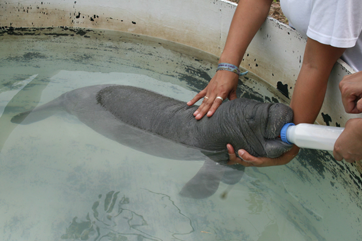What is wet tail? It is proliferative ileitis, better known as hamster enteritis. This is a contact disease and is very contagious. It is similar to dysentery in humans. The animal will get severe diarrhea and get dehydrated. The severe diarrhea can lead to rectal prolapse.
Symptoms of wet tail include diarrhea accompanied by a strong unpleasant odor. The hamsters fur will become caked with it’s own feces. The hamster will become less active and possibly lethargic. Sometimes the hamster will walk hunched up and may squeal in pain.
What causes wet tail? The most common source of infection is stress. This is why many pet store hamsters have wet tail. Shipping causes stress and so does being in a new environment. Weaning can also be a very stressful time for hamsters and one must worry about wet tail.
Treatment and prevention? Many recommend the product Dri-Tail (Neomycin sulfate) an antibiotic as a preventative, but it is highly recommended a veterinarian be sought for treatment. Veterinary treatment will consist of antibiotics, anti-diarrhea medicine and dehydration.
The hamster strain associated with the disease is the Syrian Hamster. At this time wet tail is not associated with Dwarf Hamsters.
Where does Bene-Bac fit in? It would be much more beneficial to dose the hamsters up with probiotics rather than antibiotics prior to and during stressful situations. Antibiotics should be used as a last resort, not for prevention. Pet stores should make it common protocol to dose all hamsters with Bene-Bac as soon as they arrive to the stores, no doubt the traveling involved to get to the store will be very stressful. Bene-Bac should next be continued at a maintenance level to prevent any wet tail from developing. Being in a pet store is very stressful due to new animals coming and going and being continually handled by customers. Remember that wet tail is a bacterial infection. If they are dosed with a probiotic, hopefully their intestinal tracts will be crowded with beneficial bacteria and not allow any harmful (wet tail) bacteria from developing.
After reading an article on Probiotic and Prebiotics in Gastrointestinal Disorders by Richard Fedorak and Karen Madsen, I learned the following. Evidence now exists in support of the therapeutic use of probiotics in infectious diarrhea in children. Also evidence is emerging in support of the use of probiotics in other gastrointestinal infections, in the prevention of postoperative bacterial translocation, in IBS, and in both ulcerative colitis and Chron disease. A good supportive quote regarding the mechanisms of action of probitics is as follows, “Indeed, the concept of a microbiologic balance existing in the intestine, involving competition between probiotic and pathogenic bacteria for specific binding sites on intestinal epithelial cells, has been well established in the literature. A supportive quote regarding effects on barrier function is as follows, “Resta-Lenert and Barrett showed that the live Streptococcus thermophilus and Lactobacillus acidophilus could inhibit the adhesion and invasion of enterinvasive Escherchia coli into human intestinal cell lines. I have not located research on hamsters specifically and probiotics, however the following information is related to animal models of inflammatory bowel disease. “ Oral administration of various probiotic bacteria has been shown to be effective in ameliorating colitis in the interleukin-10 genedeficient mouse model, and the HLA-B27 rat model.” Also, “ Setoyama induced inflammation in luminally sterile exenic mice with a single Bacteroides vulgatus strain. It was found that coadministration of B. vulgatus with Bifidobacterium reduced both the growth of the B. vulgatus strain and the intestinal inflammation.”



